PROVINCETOWN — The powerful storm that hit New England on Jan. 13 and caused major coastal flooding from Boston to Maine brought several saltwater intrusions to Provincetown.
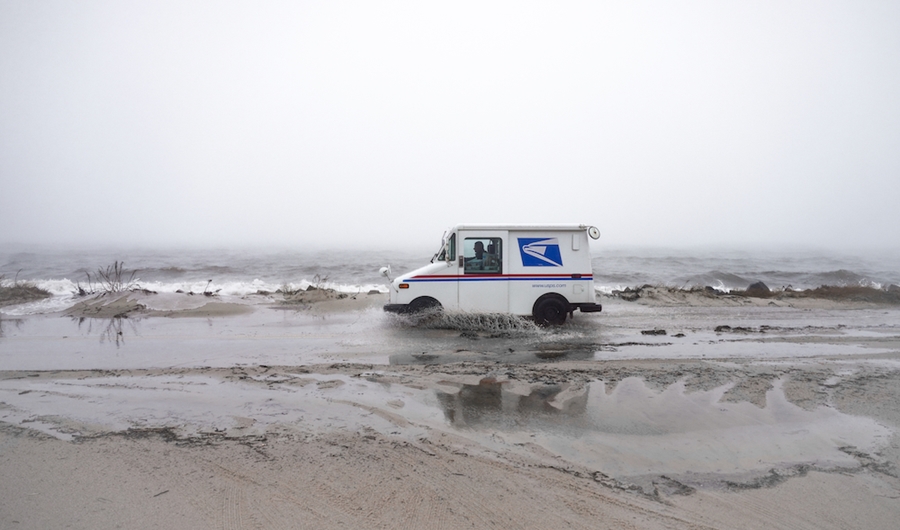
Water coursed onto Commercial Street at the Ice House condominiums and St. Mary of the Harbor Episcopal Church near Daggett Lane, creating a lake of salt water there, and also formed a large pool around Suzanne’s Garden in the East End and near the Provincetown Inn in the West End.
But flood damage to homes and businesses on Jan. 13 appears to have been less than that caused by a similar storm on Dec. 23, 2022 — even though the water levels in Provincetown Harbor were almost a full foot higher.
In fact, the tide gauge at MacMillan Pier recorded a water level of 14.69 feet — only eight inches below the recent flood of record, the Jan. 4, 2018 storm that sent water down Gosnold Street and soaked town hall and numerous homes and businesses in several feet of seawater.
The 2018 storm had produced a water level of 15.38 feet above the “mean low low water” line, or the average level of Provincetown’s extreme low tides — the highest level recorded since the U.S. Geological Survey installed the tide gauge at MacMillan Pier in 2014.
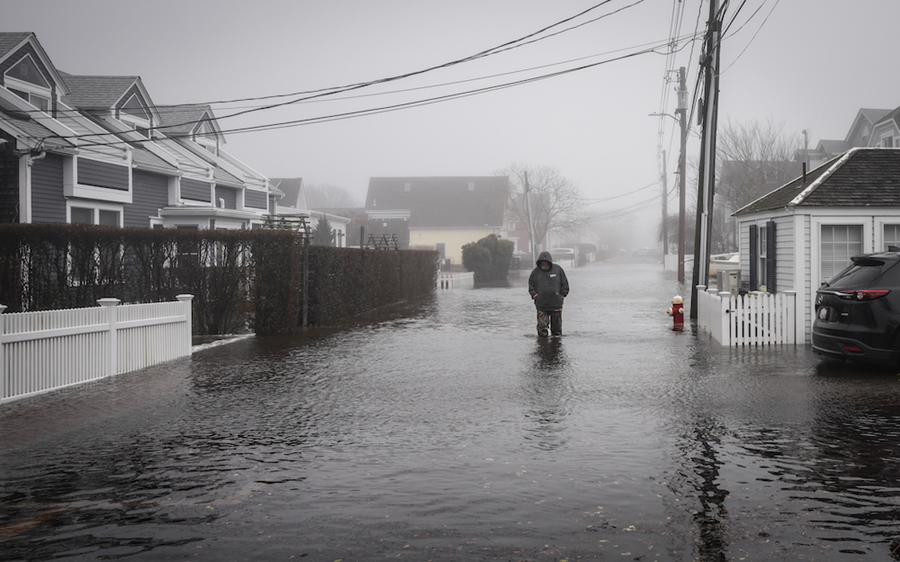
Given the extremely high water level, the Jan. 13 storm is almost as notable for what did not happen that day.
Areas that flooded in 2018, including the Delft Haven condominiums and the Gosnold Street pathway to Bradford Street, did not flood this time.
Houses that flooded in 2022 along Howland Street and Daggett Lane suffered from salt-soaked yards, but none was actually damaged inside, according to homeowners there.
Paul Fanizzi’s restaurant, which had two feet of water inside in 2022, had only a few inches this year, he said. The building had been retrofitted last year to better resist water, Fanizzi said, and he was able to vacuum out the dining room and open his restaurant for dinner.
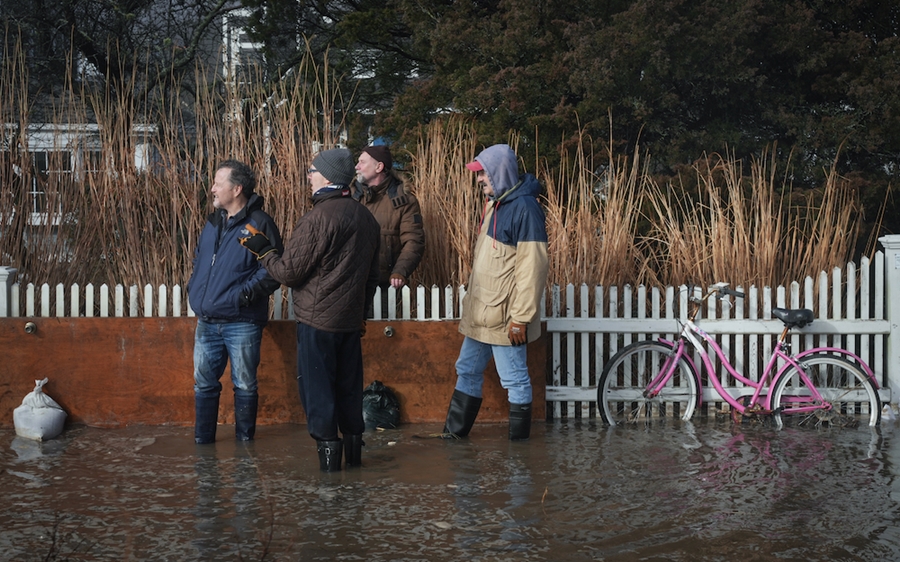
The storm still produced damage throughout town. Several units at Captain Jack’s Wharf flooded, according to condominium owner and architect Don DeRocco, and floorboards and basements around Suzanne’s Garden were soaked.
Splashing waves also hammered properties up and down the waterfront, and many property owners were not in town to assess the damage.
In several cases, however, a variety of makeshift coastal defenses appear to have made a difference.
Better Defenses
At Delft Haven, where more than a foot of seawater flowed across the property in 2018, a four-foot dune has developed since the condo association stopped plowing excess sand away after that storm.

“Before 2018, we would hire a guy every spring to push the sand back toward the beach so you could walk off the deck,” said condo owner Bob Lenzi, whose unit at Delft Haven flooded in 2018. “After the flood, we were told we weren’t supposed to be doing that, and since then a dune has built up just from natural accretion.
“We certainly would have flooded on Jan. 13, but that dune saved us,” Lenzi said.
At the Ryder Street beach, a four-foot sand berm that the dept. of public works installed with bulldozers prevented water from crossing the beach and entering Gosnold Street.
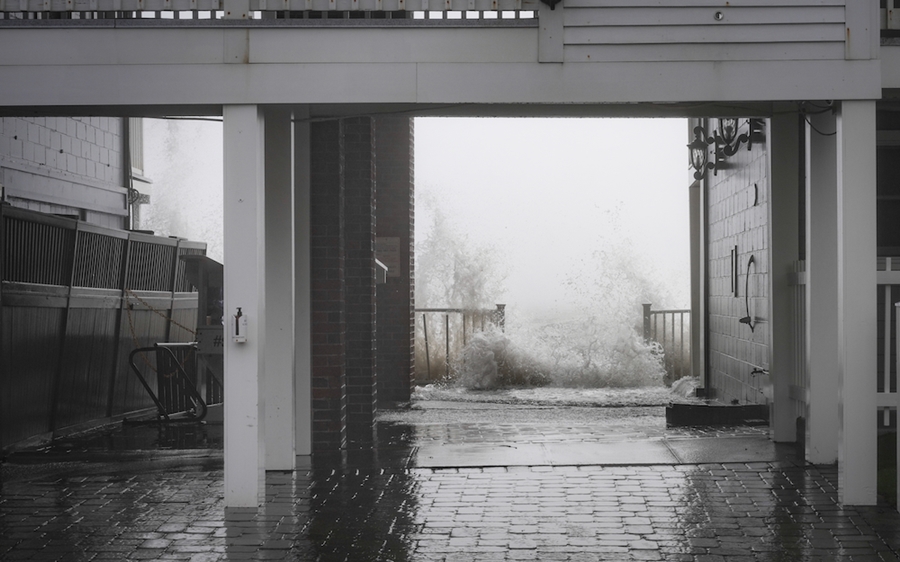
The beach itself was completely flooded, and waves splashed into the back patio of the Crown & Anchor and nearly entered Whaler’s Wharf.
Just after high tide on Jan. 13, waves had eaten away at the berm protecting Gosnold Street, but they did not break through it.
Daggett Lake
The DPW had made free sandbags available to the public before the storm — and had brought three pallets of filled sandbags to the Ice House and another three to St. Mary’s for volunteers to install, said Quinn Taylor, an across-the-street neighbor whose home flooded in both December 2022 and December 2023.
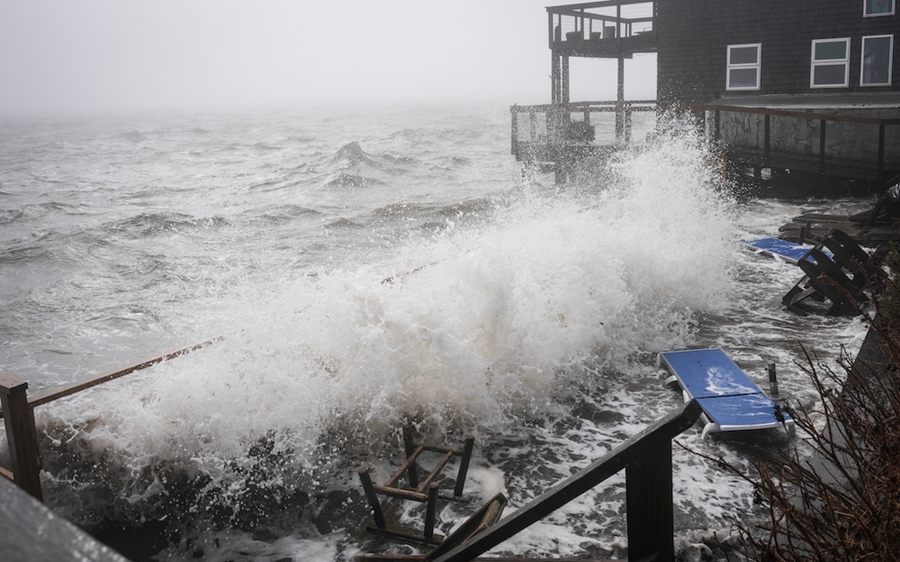
Taylor and his friends fortified the entrances to his house and the entrance to Daggett Lane, which is a private road (that is, not maintained by the town), with sandbags. Other homeowners whose properties had flooded in 2022, including Jeanmarie Kaselau and Mary Martin, lined up sandbags, too.
The owners of the elevated house at 509 Commercial St. — under which floodwaters had flowed in 2022 — fortified a sandbag wall across that property with loose sand and wooden stakes to approximate a dune in advance of the storm. Volunteers also installed walls of sandbags along the seawalls of the Ice House condominiums and St. Mary’s church.
Neither the dune at 509 Commercial nor the sandbag walls at the Ice House and St. Mary’s survived the pummeling waves of the storm. The flow of seawater across 509 Commercial was minimal this time, however, according to photos and eyewitness accounts.
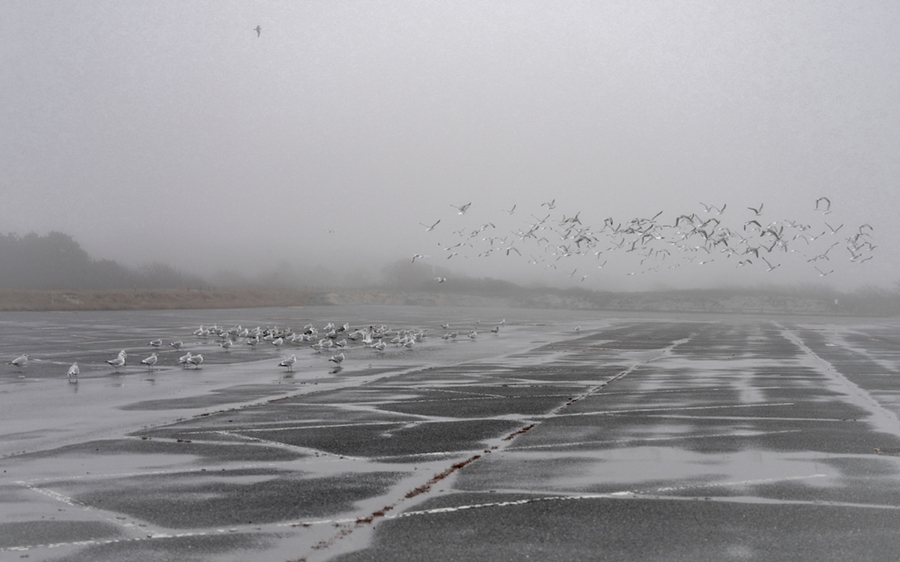
Waves smacking into the seawalls generated immense sprays, which were carried inland by the south wind, and sent shallow rivers of salt water over the parking lots at the Ice House and St. Mary’s and onto Commercial Street. Volunteers moved sandbags to defensive lines further inland. A two-foot pond formed on Commercial Street, blocked by the sandbag dam across Daggett Lane. Water leaked around its edges and through gaps in the sandbags, filling yards along Daggett Lane and Howland Street — but did not reach houses there.
“If it hadn’t been for the sandbagging and the constant moving of sandbags even during the storm, it would have been devastating to many of us, like it was in 2022,” Taylor said. “The sandbags and the sacrificial sand dune did their jobs.”
What Worked?
“Anything you do along the coast can have unintended consequences,” said Mark Borelli, head of marine geology at the Center for Coastal Studies and lead author of a 2016 report that mapped more than a dozen major flood pathways in Provincetown.
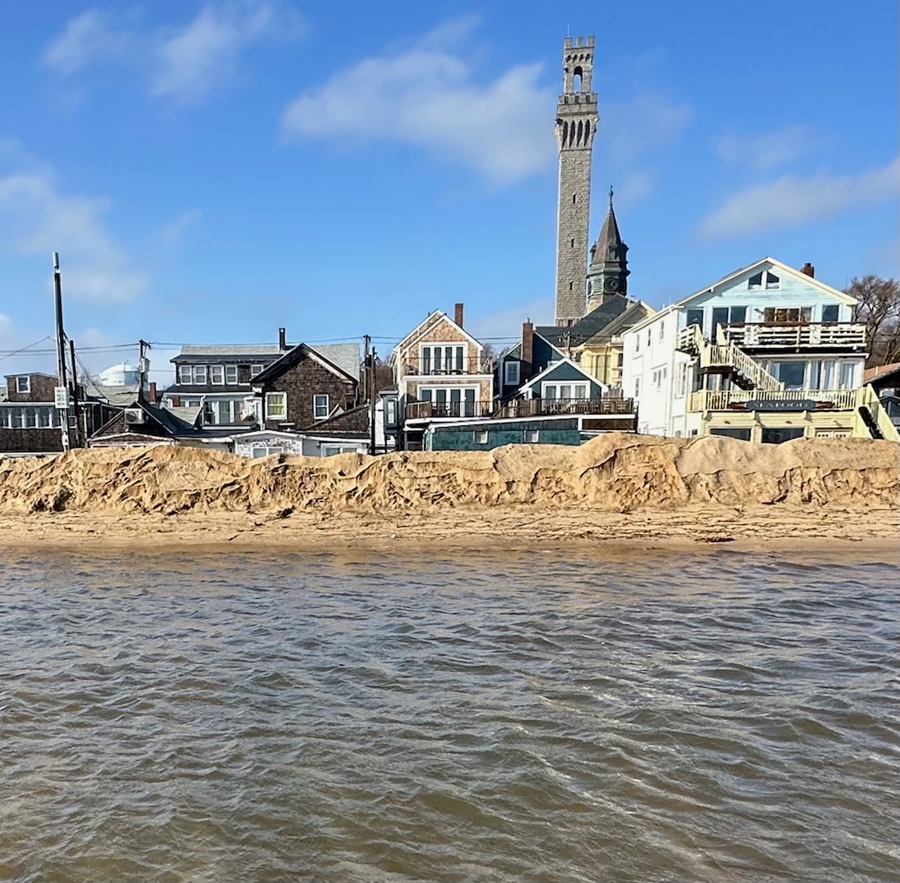
“But some of this stuff is simple,” he said. “Blocking flowing water will prevent it from going in the direction you blocked it from going.
“It can be complicated, but it’s a fair assumption to make that sandbagging low-lying locations can pay dividends,” Borelli said.
“What surprises me most is the frequency of these storms,” he added. “It feels like we need to be thinking more holistically about the day before — our prestorm response — and asking ourselves how to improve on what worked and identify what didn’t, and do better.
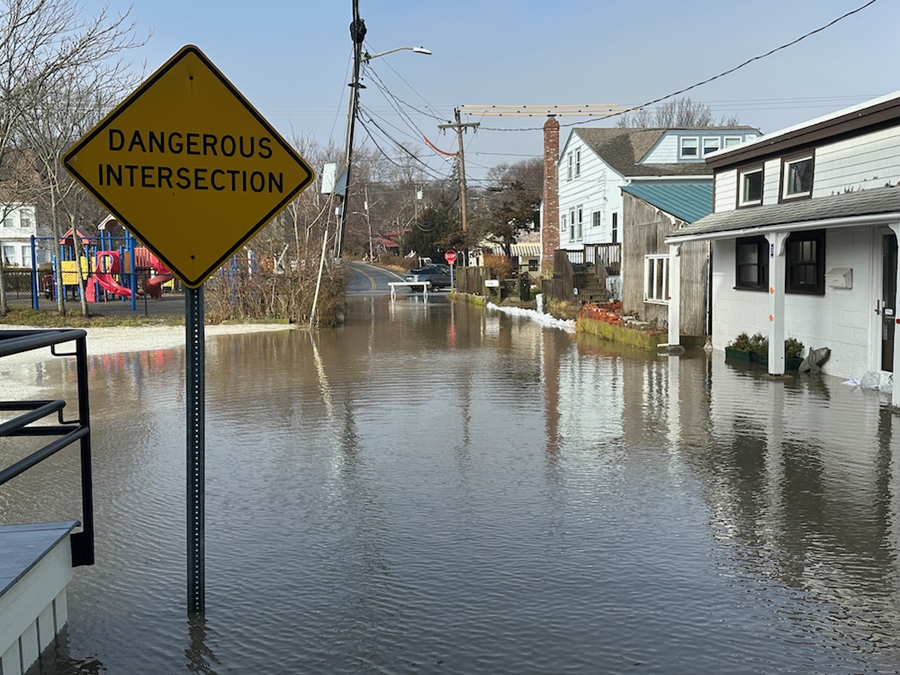
“Sandwich has always been the poster child for storm damage around here, because they’re so exposed to nor’easters and get so much erosion,” Borelli said, “but Provincetown is just getting beat up by these storms from the south.”



